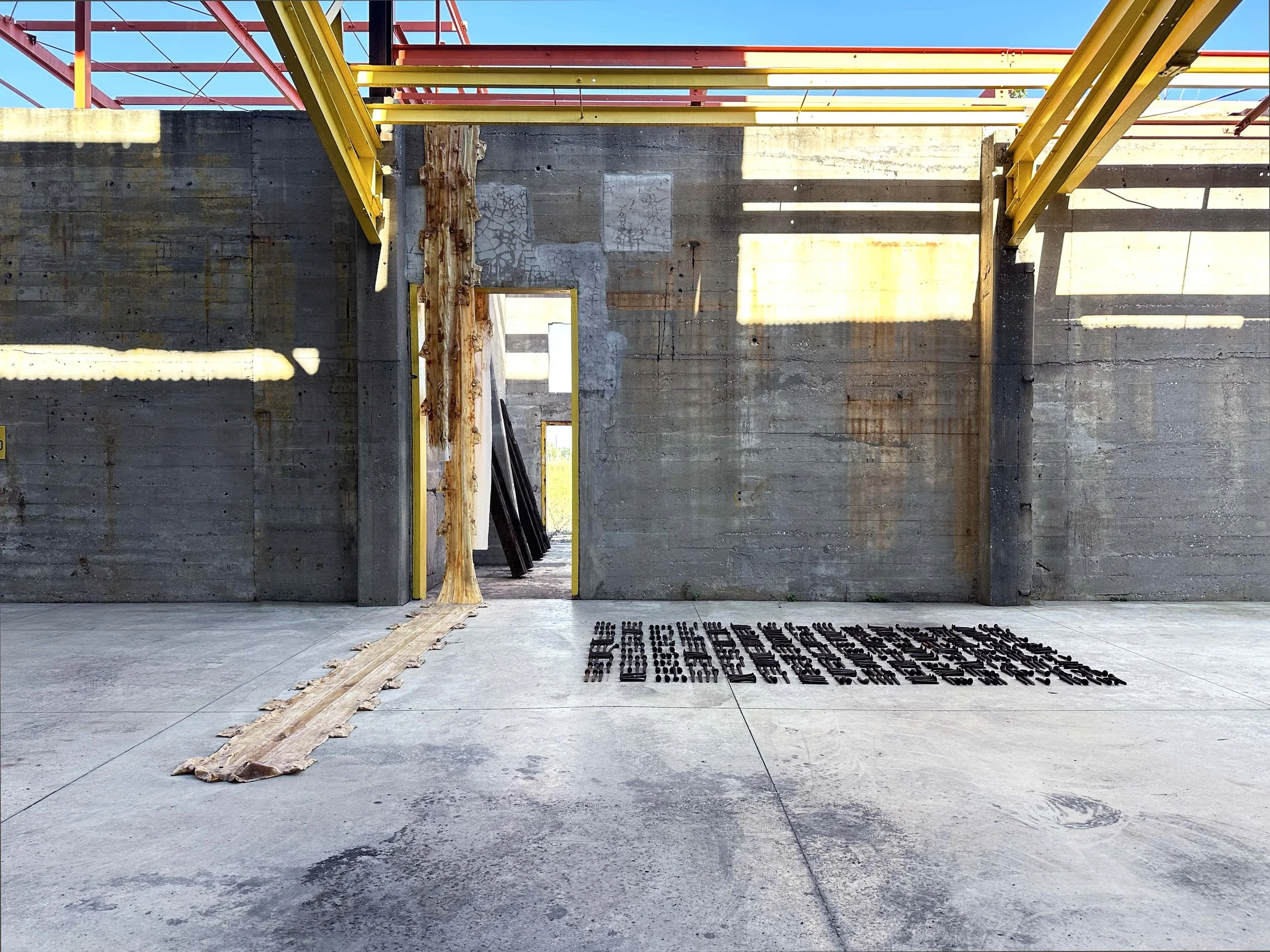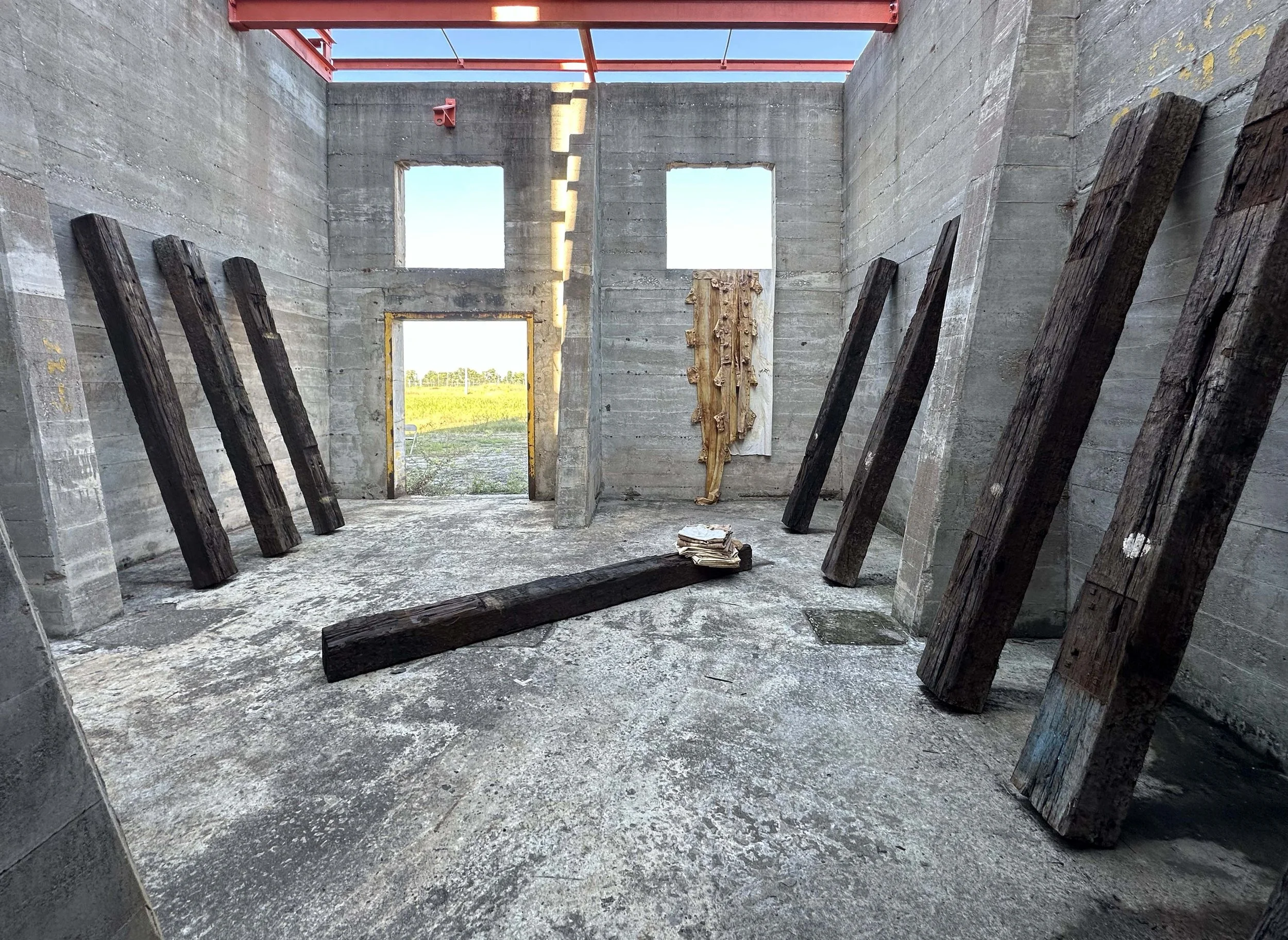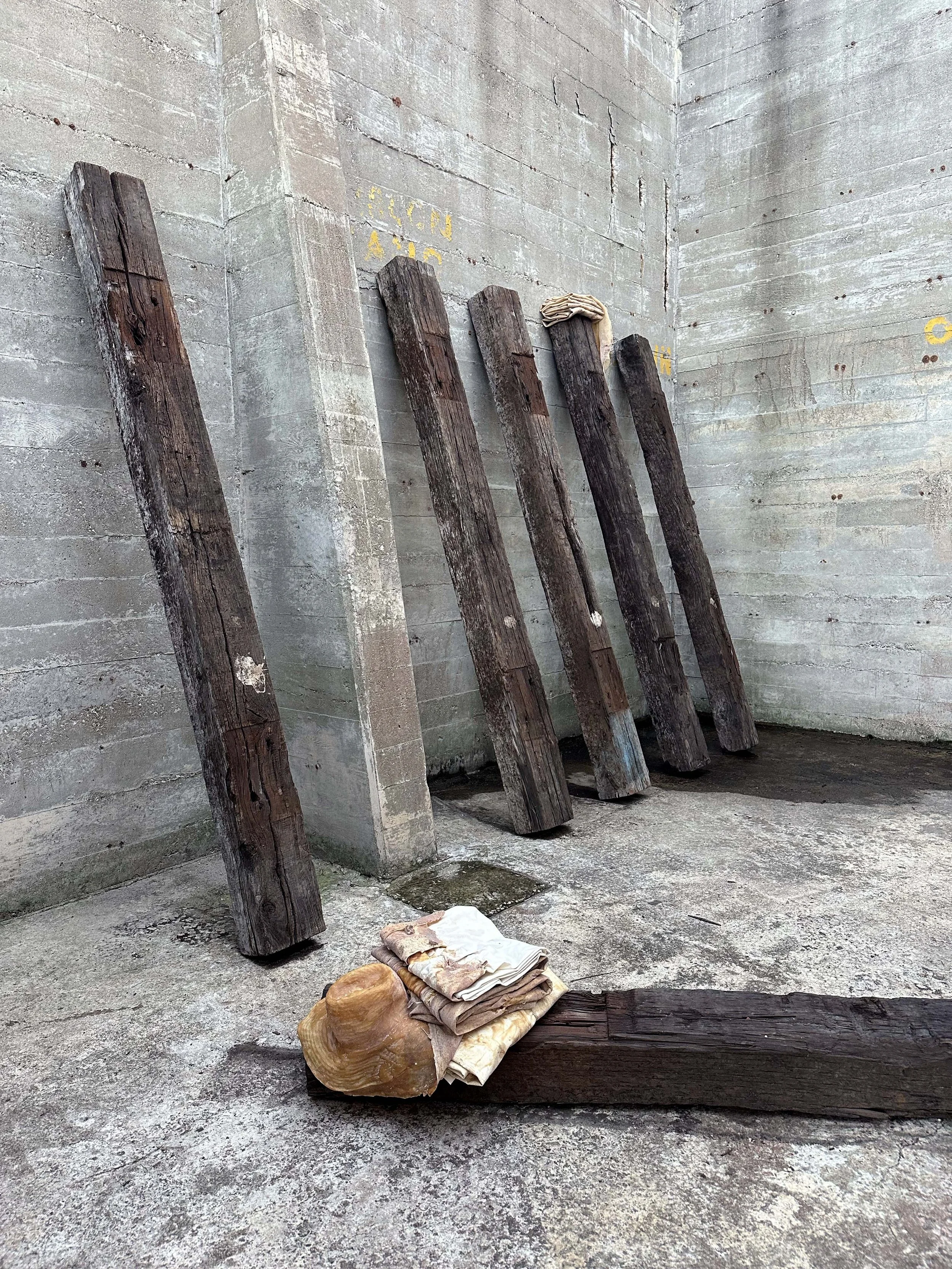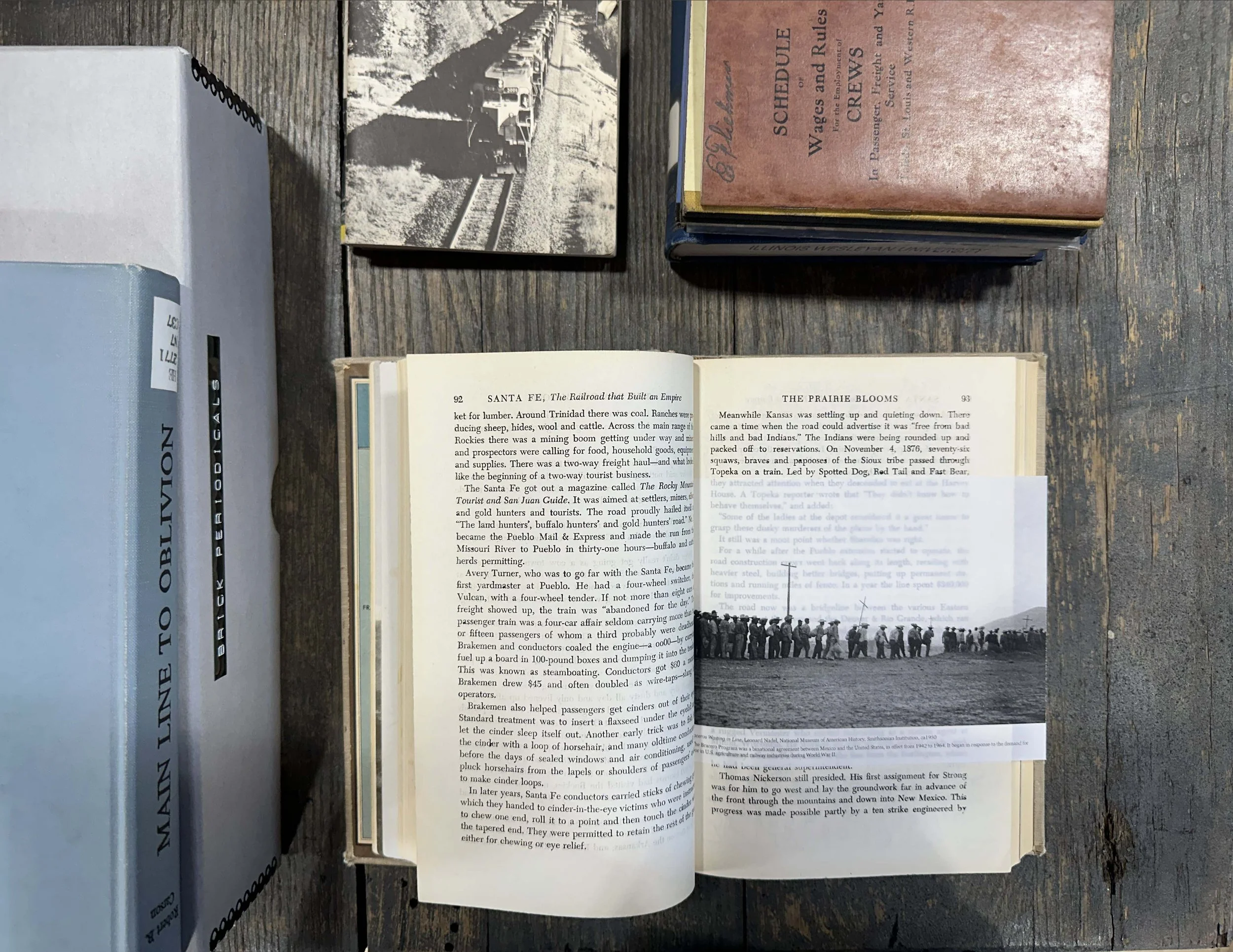Palíndromo
Parte I: en resistencia al olvido
Latex and cotton manta registers from abandoned railway tracks built by braceros; wooden ties
Parte II: cuadrilla
Spikes collected during dérives along railway tracks
Parte III: fe de erratas
Interpolations in archival histories
Site specific installation, 2025
Curated by Pia Singh
A Matter of The Invisible, at NON STNDRD, St Louis.
Text by Pia Singh:
Leticia Pardo’s Palíndromo, 2025, addresses the agriculture and construction industries’ longstanding dependency on Mexican migrant laborers; men and women who continue to face unsafe working conditions, limited protections, and labor exploitation in the U.S.. Pardo marks the monumental absence of traqueros, employed during the Bracero Program (1942-1964), in the history of a new American nationalism. Grading roads, shoveling rocks, lifting and laying rails across the Southwest and Central Plains, traqueros had to resist the racial/ethnic image of being a model labor minority, reinforcing their own social beliefs and identities against other groups of migrant workers. Vetted against one another on lines of race and class, assimilated into American culture, Pardo reimagines a suite of actions that gave shape to their daily lives. As a dériveur along abandoned tracks in the region, Pardo mimics the act of “laying a line”, transgressively casting latex impressions of tracks once used to connect the region through the transport of bulk raw material. The registers lie skin-to-skin on exposed concrete, growing sensitive to climatic and environmental changes on the factory floor. Building a perimeter of oppression of found railway sleepers, Pardo’s Palíndromo lies at the complex intersection between capitalist oppression and cultural alienation, moving between past and present through spatialized material identities. A mandala of reclaimed metal spikes scores the hours, lives, and aspirations needed to survive labor migration in Palíndromo, Parte II: cuadrilla, 2025. Marking a continuum of days, waiting and living on pennies to a dollar… the Bracero era might have offered legal channels for cross-border migration, but it also created a pathway for industrial employers to bypass paperwork to hire increasingly cheaper labor, resulting in long-term structural imbalances in today’s U.S. immigration system.



